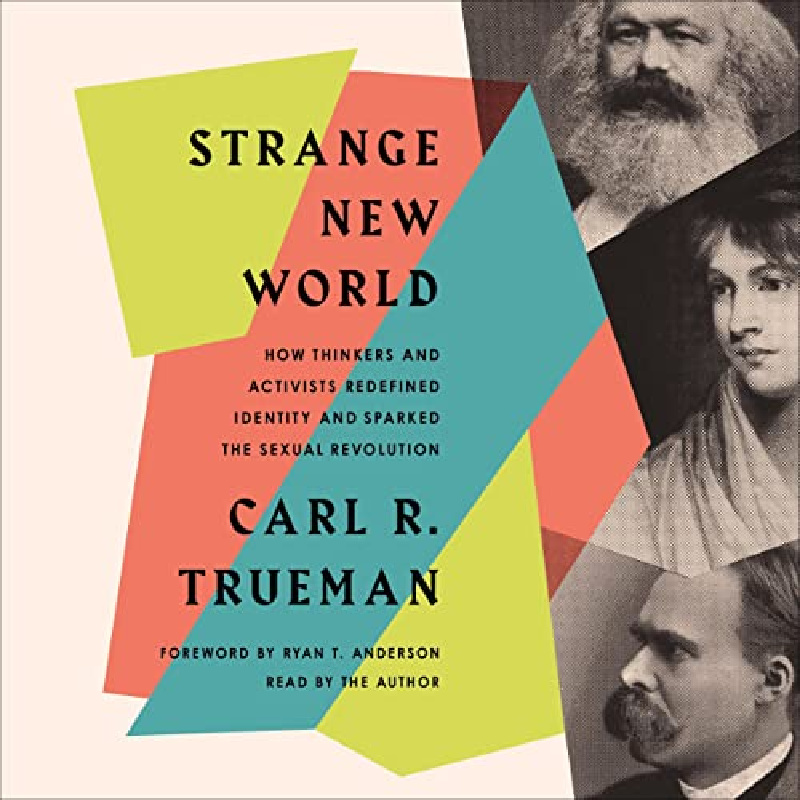With the abortion debate dominating headlines since a draft decision from the Supreme Court was leaked and published on May 2, a headline from BuzzFeed positioned Latter-day Saint social media influencers as leading the pro-life charge. “Some of the most viral ‘pro-choice’ Instagram content is coming from Mormon bloggers,” the headline read.
What followed the headline was a report of one twitter thread and three social media influencers who are Latter-day Saints. Two of the influencers, Rachel Parcell and Amber Fillerup Clark, shared tweets written by the third, Gabrielle Blair, which pointed to unwanted pregnancies as the root of the abortion problem. Blair blogs and tweets about design and family life for her 129k Twitter followers. Her thread about abortion acknowledges her faith as a Latter-day Saint and a “mother of six.” Then she says, “I have a good understanding of arguments surrounding abortion, religious and otherwise.” She then emphatically asserts that “men are 100% responsible for unwanted pregnancies,” and concludes, “… it’s easy to see that men are the problem here.”
Parcell is a fashion blogger with her own clothing line and 1.1 million Instagram followers. She shared Blair’s thread in an Instagram story and added that she considers herself “pro-choice, anti-abortion” and she takes “pride in the fact that we as women can make our own choices,” according to the BuzzFeed article.
Clark has a hair care product line and shares photos of herself and her family with her 1.3 million Instagram followers. She has publicly shared her tenuous relationship with The Church of Jesus Christ of Latter-day Saints on her blog. According to BuzzFeed, Clark also shared Blair’s thread in an Instagram story and urged her 1.3 million followers to read “the entire thread,” which she interspersed with photos of her own pregnant belly. There are those who are influencers and Latter-day Saints, and those who are influencers of Latter-day Saints.
While Blair’s tweet is still pinned at the top of her Twitter account, neither Parcell’s nor Clark’s responses to the thread can be verified because both were posted as Instagram stories, which, unless saved by the account owner, disappear after 24 hours and are no longer accessible. So readers will have to take BuzzFeed’s word for it.
Social Media Megaphone. And that’s the crux of the issue. A close read of the BuzzFeed article reveals it for what it is: clickbait. Yes, the three influencers cited in the article are confirmably Latter-day Saints, but none position themselves as doctrinal authorities. The description, “most viral pro-choice content,” is an overstatement when the content is really that of one blogger shared by two other bloggers. Yes, it’s been seen by millions between the three, but certainly, there are many other voices in the pro-choice movement seen by millions more. And finally—and most importantly—a close read of the content shared could easily be called militant toward men, but it can’t justifiably be called a pro-choice takedown. Rather, it tackles the important question of preventing unwanted pregnancies in the first place (even if Blair blames them all on men).
But for some, the clickbait and a quick read are all they need to convince themselves that Latter-day Saint mommy bloggers are, in fact, joining the pro-choice bandwagon in droves. Elder Neal L. Andersen noted this very phenomenon recently, when he said, “In a world of social media and information superhighways, one person’s voice can be multiplied exponentially. That voice, whether true or false, whether fair or prejudicial, whether kind or cruel, moves instantly across the world.” Indeed, social media, and the skewed reporting thereon, gave a megaphone to a single Twitter feed.
Community of Commonalities. But the nuances behind the clickbait and the idea that “Mormon mommy bloggers,” as they have been perennially called, might be a representative source of Latter-day Saint thinking on these issues is notable. Influencers exist across social media who are Latter-day Saints. These three women boast large followings, but none position themselves as influencers of Latter-day Saints specifically. Tweets laced with f-bombs and posts of nude silhouettes suggest “For the Strength of Youth” standards are not the primary boundaries some of them set for their public face. These posts only include the occasional hint at their religious affiliation—hints that only Latter-day Saints might pick up on, such as a temple picture in the background, a mention of their child’s “blessing” day, or a comment about their “forever family.”
So there is, on the one hand, an important semantic distinction here: those who are influencers and Latter-day Saints, and those who are influencers of Latter-day Saints. But Meg Conley, the journalist cited in the BuzzFeed article, may get at an important if not subconscious dynamic when she noted, “People are going to be looking for community.” Community forms around commonalities; the very words indicate so. For these influencers, whether they seek it or not, it’s true that one point of commonality for some among their community of followers is participation in the same religion. So in this sense, the semantics can be quickly lost: if someone sees a Latter-day Saint who is blessing their child or shares a temple wedding photo on her anniversary, it introduces an element of “influencer of Latter-day Saints.” And it’s then not a hard leap for some to say, “Look how faithful she is. Her ideas on abortion make a lot of sense.”
However, some do reposition themselves to make their point. In the noted Twitter thread, Blair introduces herself as “a mother and a Mormon.” If she simply wanted to share her perspective on abortion and men’s involvement in the pregnancy process, she could have done so without reminding people that she is a Latter-day Saint. Both “mother” and “Mormon” are shared as descriptors to give her views credibility: I am a person who cherishes children and I am a person of faith, therefore my opinion on the abortion debate has a different kind of weight.
Official Policy. It’s often the weight alone that people fall for. The opinion of a person they admire and have followed—and have allowed to influence other choices—suddenly feels valid—perhaps especially when that influencer steps out of her usual role as a fashion advisor and into a role of advisor on societal issues. The point then becomes not so much what these women said or what the article suggests they are doing by saying it. Rather, the larger question is, who is looking to them as a trusted source for information about the Church of Jesus Christ? More specifically, whose word do we, as Latter-day Saints, take when it comes to issues such as abortion, social justice, gender ideology, or a number of other current issues that directly relate to the doctrines of the gospel of Jesus Christ?
While the Church itself has not made an official statement about the leaked Supreme Court document, nor has it created a viral social media response regarding abortion, the Church’s stance on abortion is easily found and clearly articulated. In the General Handbook, it states:
The Lord commanded, “Thou shalt not … kill, nor do anything like unto it” (Doctrine and Covenants 59:6). The Church opposes elective abortion for personal or social convenience. Members must not submit to, perform, arrange for, pay for, consent to, or encourage an abortion. The only possible exceptions are when:
-
- Pregnancy resulted from forcible rape or incest.
- A competent physician determines that the life or health of the mother is in serious jeopardy.
- A competent physician determines that the fetus has severe defects that will not allow the baby to survive beyond birth.
Even these exceptions do not automatically justify abortion. Abortion is a most serious matter. It should be considered only after the persons responsible have received confirmation through prayer. Members may counsel with their bishops as part of this process.
Church leaders continue to publicly reinforce this position. As early as the late 1880s church leaders preached the immorality of abortion, and that stance has not waivered. President Joseph Fielding Smith, President Spencer W. Kimball, President Ezra Taft Benson, and President Gordon B. Hinckley have all confirmed the Church’s doctrine that “life is sacred under any circumstance,” and have warned of the “unrighteous and evil acts of abortion.” Current church president, Russel M. Nelson, said, “Now, as a servant of the Lord, I dutifully warn those who advocate and practice abortion that they incur the wrath of Almighty God.” He also testified, “Life comes from life. It is a gift from God. Innocent life is not sent by Him to be destroyed. It is given by Him and is naturally to be taken by Him alone.”
Perhaps Elder Jeffrey R. Holland best summarized the reason God cares about abortion:
Clearly, God’s greatest concerns regarding mortality are how one gets into this world and how one gets out of it. These two most important issues in our very personal and carefully supervised progress are the two issues that He as our Creator and Father and Guide wishes most to reserve to Himself. These are the two matters that He has repeatedly told us He wants us never to take illegally, illicitly, unfaithfully, without sanction.
To What Source They May Look. The doctrine of the gospel is easily accessible to those who would look for it. Members of the Church—influencers and otherwise—are of course allowed to voice opinions on the issues of the day. We are welcome to hold and express opinions that differ from stated doctrine or policy. What becomes problematic is when members express opinions that differ from doctrine or policy in an effort to convince (rather than inform) or in an effort to condemn (rather than question). “God’s greatest concerns regarding mortality are how one gets into this world and how one gets out of it.”
Therein lies the danger. President Nelson cautioned Latter-day Saints to guard their personal sphere of influence. “If most of the information you get comes from social or other media, your ability to hear the whisperings of the Spirit will be diminished,” he said last fall. “Even Saints who are otherwise faithful can be derailed by the steady beat of Babylon’s band.”
Dan Ellsworth offered this litmus test in his article about toxic influencers: “A good measure of the value of anyone’s influence is the degree to which they point people to God.”
But Nephi said it best: “And we talk of Christ, we rejoice in Christ, we preach of Christ, we prophesy of Christ, and we write according to our prophecies, that our children may know to what source they may look for a remission of their sins.”
If the leaked Supreme Court decision stands, the abortion debate will only intensify in the national conversation and in state legislatures. Knowing to what sources any of us might look for faithful perspectives on this and other issues will only become more critical as we refine our own viewpoints and advocate for measured responses in our communities and governments. Fashion bloggers will continue to use their voices however they want, but their Latter-day Saint followers should hesitate to amplify their megaphones.

















